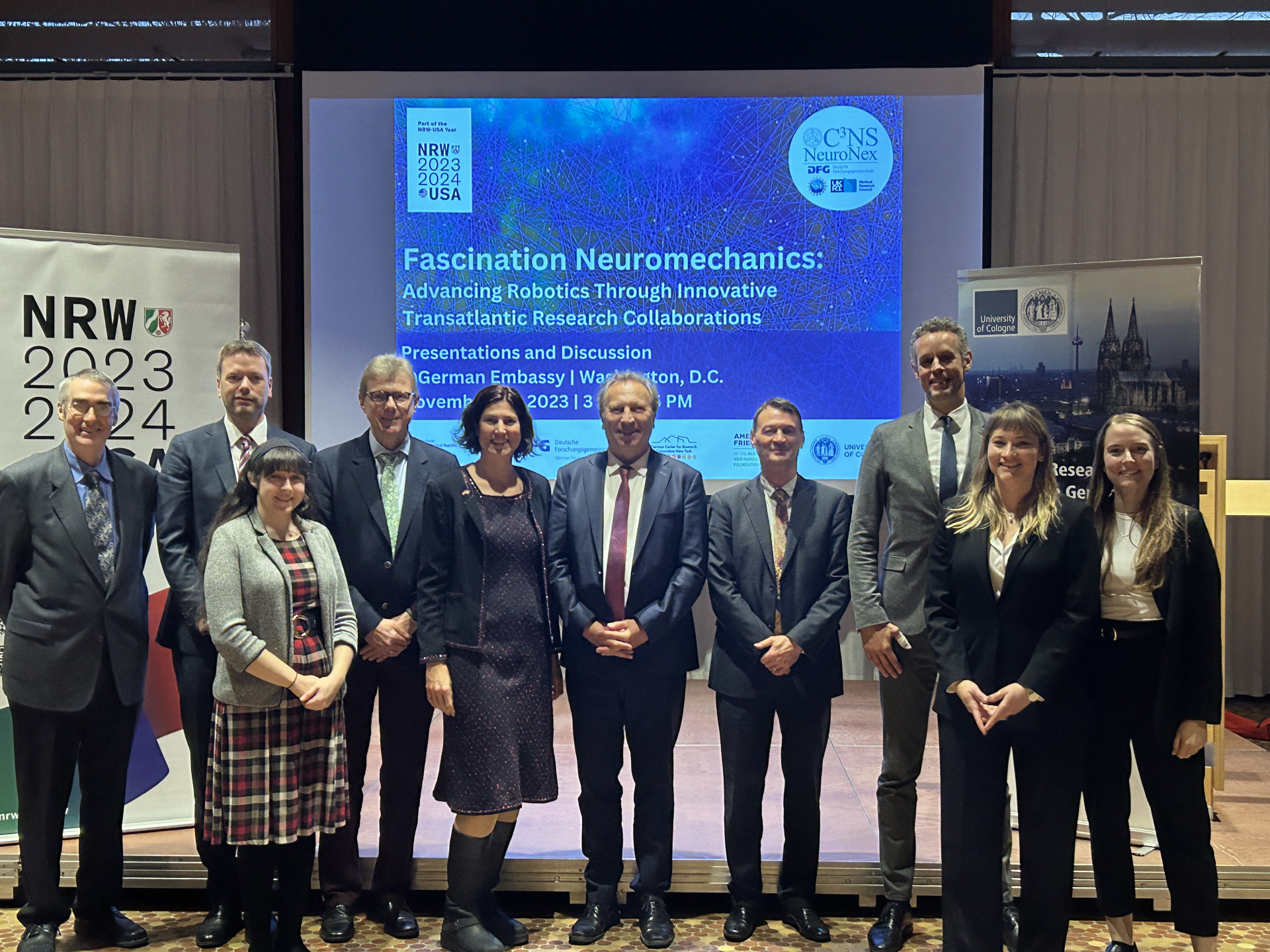
The University of Cologne New York Office together with the German Embassy Washington, D.C., the German Research Foundation (DFG) North America, American Friends of the Alexander von Humboldt Foundation, and the German Center for Research and Innovation New York (DWIH) hosted presentations and a discussion at the German Embassy in Washington, D.C., on November 8, 2023.
The scientists who presented their research at the round table are part of the Communication, Coordination and Control in Neuromechanical Systems (C3NS) network, which is made up of collaborating experts in the areas of neuroscience, robotics, and control. C3NS is jointly co-funded by the NSF, the German Research Foundation (DFG), and the United Kingdom’s Medical Research Council (MRC). It is one of only a few projects where multinational agencies fund large-scale international research projects together despite structural differences.
This exceptional collaborative project was showcased in presentations by experts from Germany and the U.S. in the areas of neuroscience, robotics, and control, followed by a discussion with representatives from the research funding, diplomatic, and scientific community in Washington, D.C. Welcoming remarks on behalf of the co-hosting organizations were shared by Prof. René Haak from the German Embassy Washington, D.C., Dr. Georg Bechtold from the DFG North America, Christian Hänel from the American Friends of the Alexander von Humboldt Foundation, and Dr. Eva Bosbach from the University of Cologne New York Office. Jörg Janssen from the German Embassy Washington, D.C. moderated the event.
Together with the participants, the speakers dove into the fascinating world of neuromechanics. Whether one is swatting away fruit flies, admiring a squirrel scrambling up the trunk of a tree, or trying to chase cockroaches out of an apartment, the agility and speed with which animals can respond to avoid danger and achieve their goals is impressive. Understanding how the body and brain work together to create such adaptive behavior can create new technical solutions, including novel, autonomous robots. This research is currently being conducted by the C3NS network, for example in mapping walking behavior of flies, modelling robots after the behaviors observed in sea slugs, or studying the walking mechanisms of mice and the forces observable during motion.
Questions discussed included: How can innovative transatlantic funding mechanisms benefit science beyond its national scope? How do the biological nervous systems control and execute interactions with the environment? How can animals be so remarkably effective in getting around in the world – flexible, adaptable, and resilient? As well as: How can such innovations, enhanced through new perspectives and approaches thanks to uniquely funded close transatlantic collaborations, contribute to increasing our society’s resilience when dealing with global challenges?
C3NS scientists present at the event were Prof. Ansgar Büschges from the University of Cologne, Prof. Roger Quinn from Case Western Reserve University, Prof. Victoria Webster-Wood from Carnegie Mellon University, and Dr. Gesa Dinges from West Virginia University. A fifth scientist, Prof. Hillel Chiel from Case Western Reserve University presented via pre-recorded PowerPoint slides incorporated into the in-person presentation of Prof. Victoria Webster-Wood.




